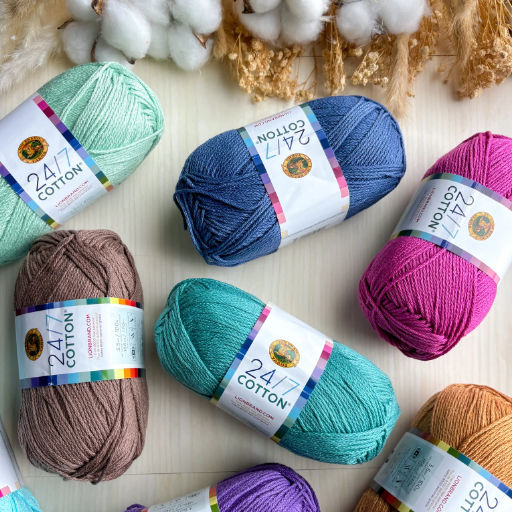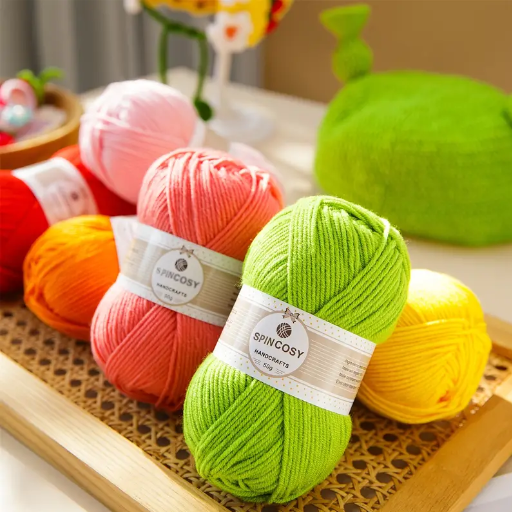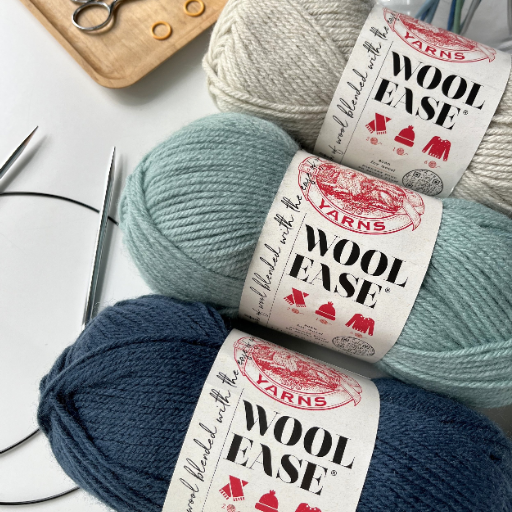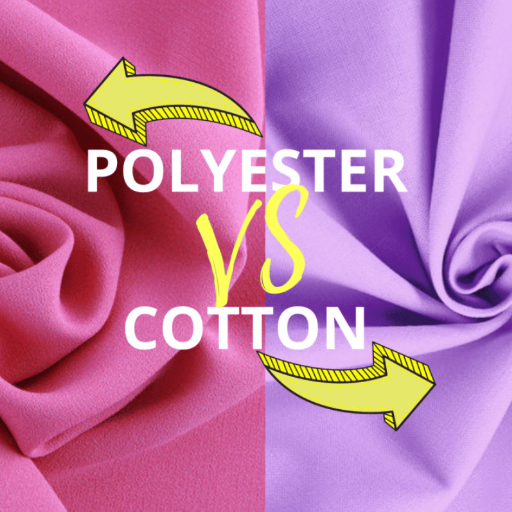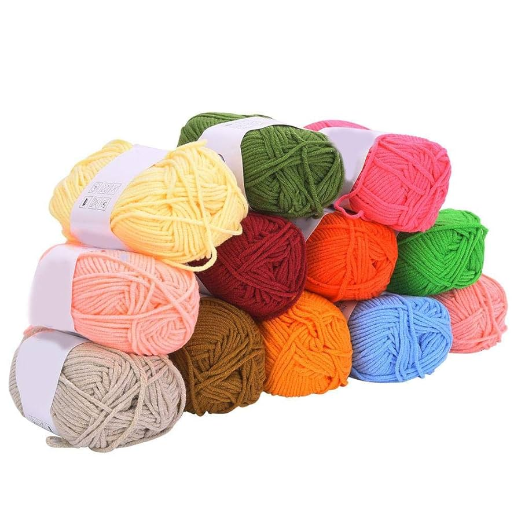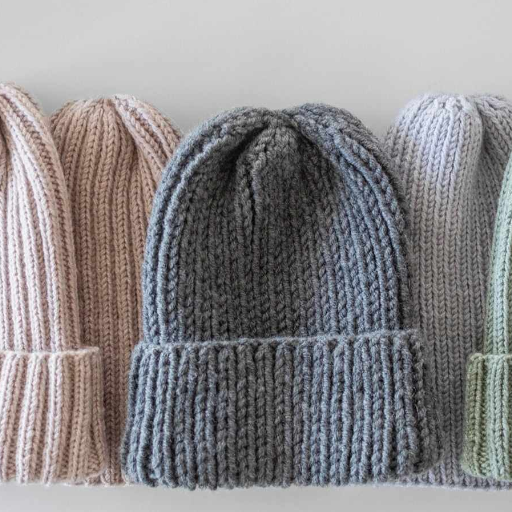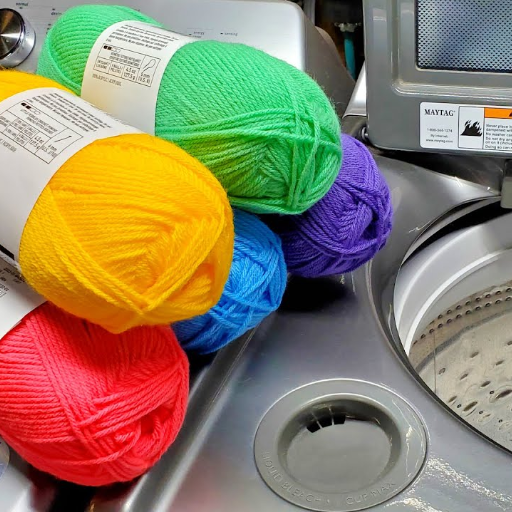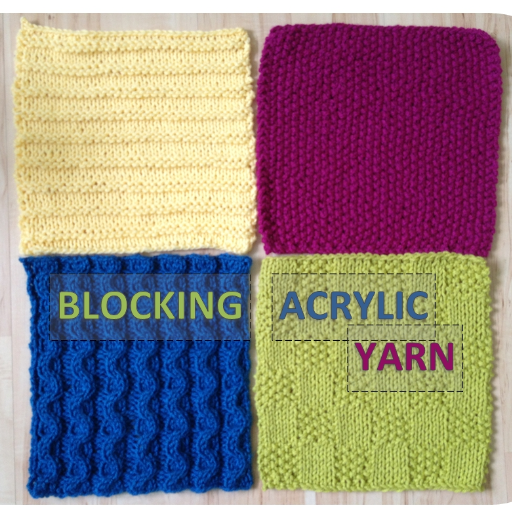The variety of yarns can truly be bewildering for an average handicrafter with an infinite spectrum of choices; however, for the novice, the decision can be made more complicated with the two alternatives that most people choose, being the acrylic and cotton yarn. Each yarn, differing from the others, has features such as texture, durability, care, and pricing, and understanding these differences is very important. This article aims to understand the fundamental qualities of the two yarns, acrylic and cotton, through a detailed comparison, providing you with the information you need to decide which will better suit your crochet project. Whether it is cozy blankets or delicate summer tops, this article will furnish you with the knowledge necessary to make an informed decision to enhance your life and crocheting.
Understanding Yarn Properties
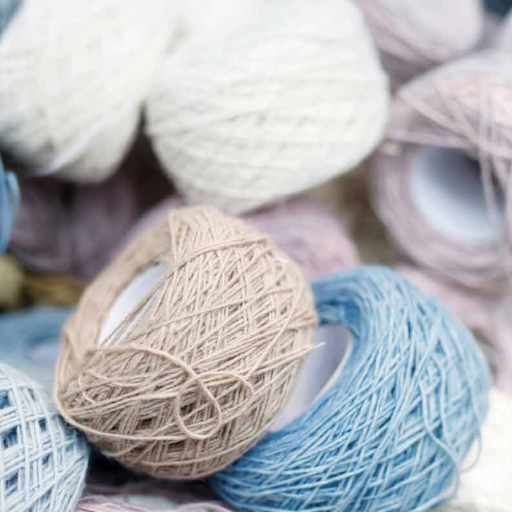
Acrylic yarn comprises a synthetic fiber manufactured from a polymer. It bears the name of versatility owing to cost-effectiveness. Being an excellent mix of light, less dense, and wet-resistant nature, acrylic offers a suitable composition for any kind of project. It is considered easy to maintain because one can throw it in the washing machine, and it retains its shape quite well, to boot. It is just that being acrylic, it does not breathe well, like any fiber from nature, and may sometimes be less soft than cotton.
Cotton yarn is a very popular type of natural fiber, used primarily for its softness and breathability, making it ideal for projects that require quick drying in moisture, such as summertime wear or items used in washcloths. Cotton yarn offers a slight luster, good dye affinity, and, therefore, beautiful and long-lasting colors. Compared to acrylic, it is heavier with a tendency to shrink, a good choice for consumers worthy of natural materials.
Material Composition of Acrylic and Cotton
Different ratios can be combined depending on the expected blend of properties to gain advantages from both acrylic and cotton. Usually, in these blends, acrylic renders resilience to the fiber, light-medium weight, and flexibility; cotton brings the season of breathability, comfort, and absorbency. A common ratio of 50/50 or 70/30 tends to be referred to in the promoter industry to be dexterously used according to the variegated needs of tough wearability and softness.
By being a synthetic, acrylic also reduced shrinkage problems while increasing wrinkle resistance and environmental durability factors. Considering the cotton inclusion during heat regulation processes, along with a natural feel, these blends can then be widely adapted for use by apparel manufacturers, as well as in home textile applications. More advanced manufacturing processes guarantee that these blends retain excellent color-fastness, shape retention, and easy-care qualities.
Durability: Acrylic vs Cotton Yarn
Acrylic yarn is more durable in terms of abrasion and wear-resistance, suitable for works that really need performance over time, such as outdoor textiles and highly used garments. Acrylic fibers are themselves strong and resilient to damage, can stand repeated washing and extended periods of exposure to light and sanitary without serious degradation. This arises from its synthetic polymer nature that is purposely engineered to forgo either of its structural integrity when subjected to any physical stressors.
While it is natural and much-celebrated for being soft and comfortable, cotton yarn is relatively less durable. The fiber may wear off with time, especially if it is in constant friction or adverse environmental effects of humidity, which weakens its fibers. Yet cotton does have a very unique tensile strength when dry, so in dry controlled environments, it invariably assures a form of strength with which cotton is endowed.
The strengths of acrylic against physical stress, combined with the inherent strength of cotton on the other hand, create highly versatile and hard-wearing yarn blends. Post-modern fiber technology treatments and finishes now aim at reducing pilling of acrylic and enhancing moisture-control of cotton. Thus, a very balanced formulation between practicability and durability is attained in an acrylic-cotton blended yarn for general use.
Cost Comparison: Acrylic Yarn vs Cotton Yarn
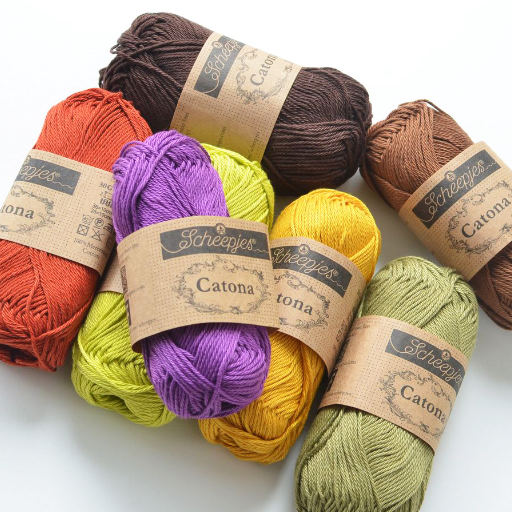
Generally, acrylic yarn is cheaper than cotton yarn, which is a greater advantage for projects on a budget. Acrylic’s discount price can mostly be traced to the fact that its synthetic origin process can be maximized with efficiency. Cotton yarn is quite expensive because of the natural fiber, whereby a promotion must be given for the cultivation, harvesting, and processing of natural cotton. While the breathability and softness of cotton exceed that of acrylic, the latter is preferred where price is the major consideration for a given project. At the end of the day, the judge of which to use ultimately will be dictated by what the project requires and how much money is available to spend.
Price Range for Acrylic Yarn
Almost all guidelines list acrylic as the cheapest yarn to make it appealing to penny-wise crafters. Price ranges from $2 to $10 per skein of acrylic yarns vary with the brand, weight, as well as quality of the fiber. Cheap brands pushed to the low end usually offer acceptance, whereas a good acrylic blend can push itself higher-end, small-goitch blends boosted by such qualities: enhanced publishing: An emphasis on softness, Anti-pilling. Bulk purchase further cuts down on cost, which could be a great saving for large projects when purchased in packs, and the prices may also vary depending on the season’s sale, the state’s retailer rebate, and the area, ensuring good availability for these fabrics.
Price Range for Cotton Yarn
Cotton yarn price can be influenced by many factors, ranging from quality, brand, and treatment or processing used for making the cotton yarn. A normal cotton yarn sold for about $2 up to $5 per skein for rowdy variants used commonly for many projects; of course, more expensive yarns are sometimes excellent or organic, usually eco-friendly, and range from soft to hundreds of dollars. Then, special cottons like mercerized or hand-dyed mercerized or hand-dyed cottons are priced higher, usually around $15 an even more per skein. Bulk buy or in cones or multipack skeins, buying in larger quantities almost always lowers pricing per unit, which becomes an enormously appealing advantage for bigger projects. Other treatments, varying in pricing, include availability within a region, sales season, and the manufacturer’s favor.
Value for Money: Which is Better?
Comparison for a better value in yarn takes into consideration durability, yardage, and the special requirements of the project. Acrylic yarns usually come in the most economical option due to their cheaper price for mass use, as well as a wide scope for the application. Their aptness for bestowing cost-sensitive projects like blankets and beginner designs is worthy of mention. However, a level of being least resistant to wear, and eventual pilling, may jeopardize the designs of inheritance.
Environmental Impact of Yarn Choices
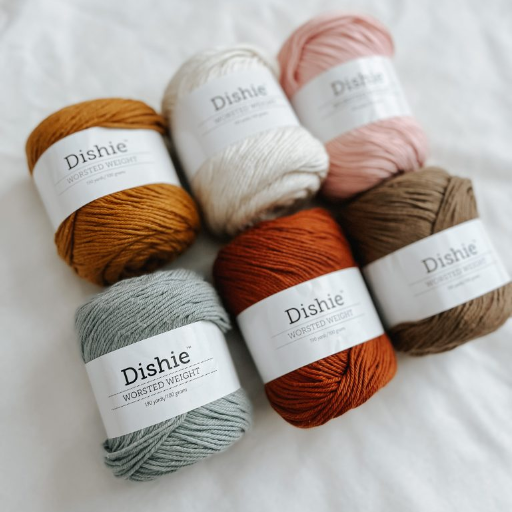
The environmental consequences behind yarn choices are always about the material and production methods involved. Natural fiber such as organic cotton and wool and bamboo-based fiber are considered more eco-friendly options than various synthetic versions such as acrylic or polyester; petroleum is used in these and are considered microplastic polluters. In contrast, a fiber that is organic and sustainably grown will necessarily help away from chemical use and promote good land management practices. Yarns can also be recycled or upcycled and further environmentally friendly with an eco-conscious company certifying ethically produced yarns through low-impact dyeing processes; composting natural fibers will also at least partially return the entire volume to the environment.
Sustainability of Cotton Yarn
When talking about cotton yarn, which is widely used and naturally derived, there exists an alternate perspective on the environmental condition at every stage of the lifecycle. Conventional cotton cultivation is not very friendly environmentally, using enormous quantities of water and chemical inputs of pesticides and synthetic fertilizers. Recent figures indicate that a prodigious 20,000 liters of water may be used to make a kilogram of cotton, just enough to make a single T-shirt and a pair of jeans. Somehow, overuse of water tends to deplete local water resources and destroy ecosystems around them and hamper the livelihoods of local communities.
Non-organic cotton, on the other hand, causes soil degradation and biodiversity loss due to the increased use of agrochemicals. Organic cotton, however, is considered to be a further sustainable alternative to counteract these problems. Organic farming considers organic methods that avoid the use of synthetic inorganic chemicals and promotes soil health through crop rotation, which usually uses less water by means of emphasized rain-fed agriculture. In addition, newer impacts provided by BCI (Better Cotton Initiative) and the introduction of a genetically modified (GM) cotton variety with drought resistance are in fact efforts to eliminate environmental impacts.
Environmental Concerns with Acrylic Yarn
Its synthetic nature allows acrylic yarn to pose huge environmental challenges. The polymerized acrylonitrile, as a direct derivative of fossil fuels, constitutes the largest portion of the synthesis of this yarn; the result is that synthesizing acrylic contributes to the emission of greenhouse gases to the atmosphere in a huge amount. Moreover, acrylic yarn is a menace to landfills as it does not get decomposed and continues to pollute those sites for centuries on end. An even more imperative issue is the release of microplastics while washing acrylic-produced textiles; these microfibers generally bypass wastewater treatment plants and continue to accumulate in aquatic ecosystems with the potential of harming marine life and food chains. In relation to these recent concerns, promotion should be given to create sustainable substitutes, to initiate recycling techniques, and sponsored regulation which will negate the harm caused by synthetic fibers such as acrylic.
Eco-Friendly Alternatives
The creation of eco-friendly alternatives for synthetic fibers constitutes a paramount stage in reversing environmental degradation. Developments in the realm of biodegradable and additionally bio-based textiles derived from organic cotton, hemp, and bamboo might prove to be the answer to this pressing issue. For example, organic cotton drastically decreases water consumption and totally eliminates the use of harmful pesticides, thus reducing its environmental footprint. In the same vein, hemp fiber, which is known to be very tough and fast-growing in nature, requires little agricultural inputs, all while improving the soil quality. Provided that bamboo textiles are responsibly sourced, these also present a renewable and biodegradable alternative, but great attention into the actual processing methods has yet to be poured.
Moreover, advances in closed-loop manufacturing techniques have established the means for producing fibers like lyocell, which originate from wood pulp harvested in a sustainable manner, through the use of non-toxic solvents and with water being recycled within the production process. Prospective alternatives such as algae-based fibers and spider silk synthetic proteins through biomanufacturing by fermentation demonstrate the promise of biofabrication to create textiles that rival the functions of synthetic fibers without the extreme environmental footprint. Scaling production under safe parameters, plus developing the transition though policy frameworks and consumer awareness campaigns, will, therefore, ensure the simultaneous establishment of innovation and environment-friendly development in the global textile industry.
Best Uses for Acrylic and Cotton Yarn
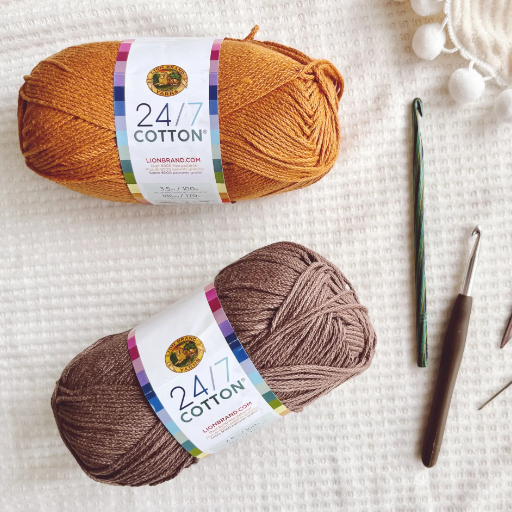
Due to differences in their properties, acrylic and cotton yarns find their best applications in:
- Acrylic Yarn: Known for its durability, affordability, and resistance to wear, acrylic yarn is ideal for crafting blankets, scarves, hats, and other cold-weather accessories. Its lightweight nature and resistance to moisture make it a practical choice for easy-care items like sweaters and home décor projects.
- Cotton Yarn: Renowned for its breathability, softness, and natural composition, cotton yarn is perfect for lightweight garments like summer tops, dishcloths, baby clothes, and reusable shopping bags. It is especially valued for projects requiring durability and comfort in warmer climates or for items that will be frequently washed.
Ideal Projects for Acrylic Yarn
Being a very versatile and quite inexpensive yarn, the acrylic yarn should find good use in a large array of projects. It proves a good fit for producing warm accessories like scarves, hats, and gloves, mainly due to their lightweight and water repellence. The other application areas of acrylic yarn include blankets, afghans, and throws, where its color fastness and durability come in handy for extended working life and bright colors. Also, the acrylic yarn is worth mentioning in the making of decorative home items such as cushion covers and rugs, since the beauty of these products lies in their practical aspects. For a beginner, acrylic yarn is surely a go-to as the affordability and ease of handling will permit building the very basics of knitting or crocheting skills. Its affordability and capability of many projects that seek to imitate the character of more expensive fibers while maintaining a solvent character keep it foremost in the minds of most crafters.
Best Applications for Cotton Yarn
- Clothing Projects
Knitting or crocheting cotton yarn into clothing such as summer tops, cardigans, and baby clothes is good. In warmer temperatures, the cotton yarns will keep the wearer comfortable as they carry the moisture away from the body and are really soft.
- Home Textiles
Making a home decoration item from cotton yarn will also be a breeze, considering it is accented with durability and also a washable advantage, such as making dishcloths, placemats, table runners, and curtains. Its durability amidst regular washing makes it more effective for these household essentials.
- Market Bags and Totes
Cotton yarn is in the making of reusable market bags and totes. These projects would form an eco-friendly alternative to plastic bags while holding up to heavy loads.
- Amigurumi and Toys
Owing to its firm structure, cotton yarn is regularly employed in amigurumi (small-scale crochet stuffed toys). Evenness of cotton yarn helps in carving out firmer shapes and well-defined stitches for finished products of fine quality.
- Outdoor Accessories
Owing to cotton yarn being fade-resistant under sunlight, it is very dependable for creating picnic blankets, outdoor cushions, and patio accessories. Its breathability ensures that the usefulness of the pieces will not fluctuate on account of different climate conditions.
- Baby Accessories
Compare Differences Between Cotton and Acrylic
|
Parameter |
Cotton |
Acrylic |
|---|---|---|
|
Source |
Natural (from cotton plant) |
Synthetic (man-made fiber) |
|
Softness |
Naturally soft and breathable |
Can vary, often less soft |
|
Durability |
Wears down over time |
High durability |
|
Moisture Absorption |
Absorbent, retains moisture |
Low absorption, wicks moisture |
|
Weight |
Heavier than acrylic |
Lightweight |
|
Heat Retention |
Low, keeps cool in warm weather |
Good heat retention |
|
Color Retention |
Colors may fade over time |
Strong color retention |
|
Hypoallergenic |
Hypoallergenic, ideal for sensitive skin |
Can irritate sensitive skin |
|
Cost |
Typically more expensive |
Generally more affordable |
|
Eco-Friendliness |
Biodegradable, renewable |
Non-biodegradable, less eco-friendly |
|
Ease of Care |
Requires careful washing |
Easy to clean and maintain |
|
Availability |
Readily available |
Widely available |
|
Applications |
Clothing, beddings, baby items, etc. |
Outdoor gear, sweaters, accessories |
Expert Tips for Beginners
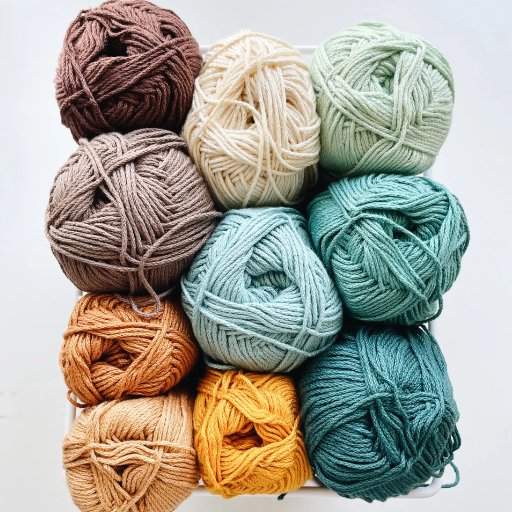
- Start with Understanding Your Needs
Consider your own priorities before going forth to buy or choosing any material, aka comfort, durability, or affordability!
- Check for Quality Certifications
Certifications like OEKO-TEX or GOTS are worth looking for since they guarantee that the fabrics have been tested for safety and sustainability.
- Test for Sensitivity
If your skin is rather sensitive, try putting it to the test by using a small item or swatch to see whether or not your skin may react before going in with a larger purchase.
- Prioritize Maintenance Requirements
Materials should be chosen as per your ability and willingness to care for them. For example, some natural fibers might require a special washing method, whereas synthetic ones could be just all right to toss into the washing machine.
- Invest in Versatility
Go for materials that can be applied in multiple ways so that your investment gains maximum returns. For example, a material viable for in and outdoor use would serve your interests better.
How to Choose the Right Yarn for Your Crochet Project
Choosing just the right yarn is right at the heart of any crochet project since it greatly determines the real success of what is intended. The following factors concern your optimized working approach/guidance:
- Understand Yarn Weight and Project Suitability
Yarn weight-from lace to super bulky-affects much of the texture, flexibility, and durability of the finished work; light weight yarns such as sport or fingering are best for very delicate patterns while heavy weights like worsted or chunky are better for hard wearing projects such as rugs or blankets.
- Fiber Content and Properties
Fiber composition should be chosen based on the spirit of your project. For example, naturally brittle yet resilient fibers help make a nice cold-weather garment: wool is infamous for stretching and warming its wearer. On the contrary, cotton, which enhances breathability and smooth finishing for summer wear or household items, is best. Blended fibers help combine the good properties of various materials to improve the function and wearability of the selected fiber.
- Color Availability and Dye Patterns
Color and dye arrangement may enhance your work; solids let stitch definition shine, which is what you want for a pattern-heavy design, whereas variegated and self-striping yarns do much on their own to keep a project visually-entertaining. If you buy more than one skein of the same yarn, always check for the dye lot number – this way you can be sure of color consistency for your entire project!
- Budget and Availability
Any great yarn would make even a not-so-great project gorgeous but tends to be fairly expensive. Combine your budget with that of your desired project, looking locally for a limited supply or to online sellers selling in larger quantities. Also, it definitely pays buying enough yarn at once since availability in the course of a few months can fluctuate, especially with very unusual or limited-edition lines.
Looking at these factors closely will result in the improvement of not only the process but also the outcomes of crocheting projects, thus ensuring satisfaction with the outcome.
Understanding Weight and Texture
The weight and texture of the yarn are two of the most critical factors one should determine for the very reason that they help shape the structure and appearance of the finished product. Yarn weight has been standardized into categories such as lace, sport, worsted, bulky, and so forth, with each category being descriptive of the thickness and certain characteristics making it suitable for particular types of projects. For example, the lighter weight categories are lace and fingering weight, suitable for complex patterns; the bulkier types are considered bulky and super bulky, offering quick results and more robust finishes. Texture, or the surface property, will range from smooth and lustrous to rough or coarse. Smooth yarns usually tend to be cotton or silk blends that encourage the stitches to look clean and simple, while textured yarn would include wearer dimension and details, giving the project an interesting look. Weight and texture working together in harmony are key to achieving the desired drape, density, and look of a crochet project.
Reference Sources
1. Acrylic Vs Cotton Yarn – What’s The Difference?
- Key Points:
- Acrylic Yarn: Lightweight, durable, and available in vibrant colors. It is machine washable, warm, and hypoallergenic but less breathable and prone to melting under high heat.
- Cotton Yarn: Natural, breathable, and absorbent, making it ideal for summer garments and dishcloths. It offers great stitch definition but can shrink, wrinkle, and bleed colors.
2. Acrylic Yarn vs Cotton: What’s the Difference & When to Use
- Key Points:
- Acrylic Yarn: Best for projects requiring durability and vibrant colors, such as blankets and baby clothes. It is lightweight and retains shape but lacks breathability.
- Cotton Yarn: Ideal for summer wear and eco-friendly projects due to its natural fibers. It is soft, breathable, and absorbent but may shrink and stretch over time.
3. Is Cotton or Acrylic Better?
- Key Points:
- Cotton Yarn: Offers crisp stitch definition and holds its shape well, making it suitable for structured projects like bags. However, it can become fluffy with wear and is heavier than acrylic.
- Acrylic Yarn: Stretchy and lightweight, making it easier to work with for beginners. It is great for kids’ clothes and items requiring frequent washing but may pill over time.
Frequently Asked Questions (FAQs)
Q: What are the pros and cons of using cotton yarn?
A: Cotton yarn is made from fibers of the cotton plant, which gives it a unique breathability and softness. One of the main pros of using cotton is its ability to absorb moisture, making it ideal for summer garments. However, cotton yarn can be less elastic than synthetic yarn, which may affect the structure of your projects. Additionally, it tends to be more expensive than acrylic yarn. On the other hand, cotton yarn can be used for a variety of projects, including dishcloths and baby items, thanks to its durability. Overall, if you’re looking for a natural fiber with good breathability, cotton yarn may be the right choice for you.
Q: How does acrylic yarn compare to cotton yarn?
A: Acrylic yarn is a synthetic yarn that is often lighter and more affordable than cotton. It comes in a wide range of colors, making it a popular choice for vibrant projects. While acrylic yarn is easy to care for and can be machine washed, it tends to lack the breathability of cotton yarn. This means that for summer projects, cotton might be preferable. On the other hand, if you’re looking for yarn that holds its shape and resists shrinking, acrylic yarn is a great option. In summary, both types of yarn have their unique characteristics, and the choice depends on the specific needs of your project.
Q: When should I choose acrylic vs cotton yarn?
A: Choosing between acrylic and cotton yarn depends largely on the type of project you are working on. If you’re making items that require elasticity and durability, such as blankets or sweaters, acrylic yarn is often the better choice. However, if you want a breathable fabric for summer wear or kitchen items, cotton yarn is the way to go. Additionally, cotton yarn can be combined with synthetic fibers to create cotton blends that offer the best of both worlds. It’s essential to check the yarn properties and consider the pros and cons of each type before starting your crochet project. In the end, the right yarn for your crochet will align with your specific project requirements.
Q: Is acrylic yarn a good material for crochet projects?
A: Acrylic yarn is often favored for various crochet projects due to its affordability and wide availability. It is made with acrylic fibers, which offer a soft feel and vibrant colors. Many crafters appreciate acrylic yarn for its ability to hold shapes well, making it perfect for amigurumi or structured designs. However, some may find it less breathable than cotton, which could be a drawback for summer clothing. Overall, if you’re looking for versatile yarn that is easy to work with, acrylic yarn is a solid option for many crochet projects.
Q: Can I mix cotton and acrylic yarn in my projects?
A: Yes, mixing cotton and acrylic yarn can yield fantastic results in your projects. Cotton blends can leverage the strengths of both materials, providing the breathability of cotton with the durability and elasticity of acrylic. This combination is ideal for items like blankets or garments where comfort and structure are essential. When using a cotton and acrylic blend, you can also enjoy a wider range of colors and textures. Just ensure you follow the care instructions for the blend you choose, as it may vary. Mixing these types of yarn can help you achieve the perfect balance for your crochet project.








